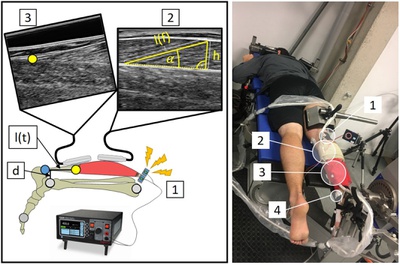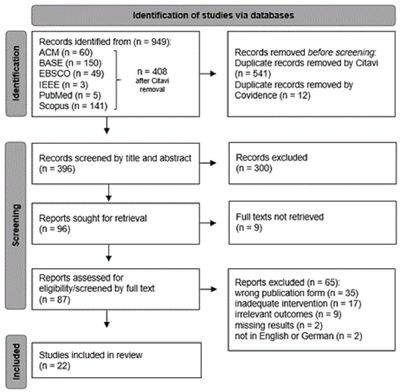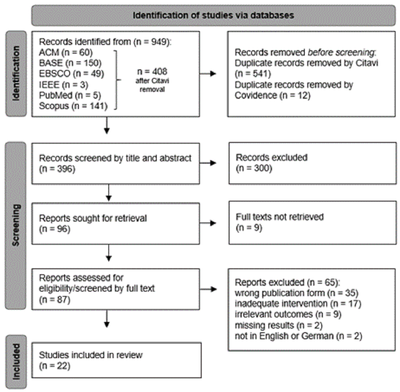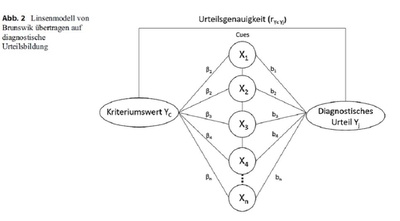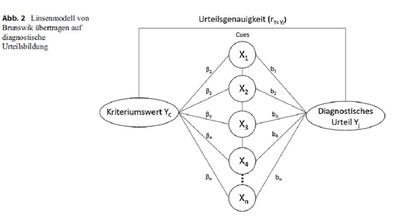#fitspiration: a comparison of the sport-related social media usage and its impact on body image in young adults
18 Januar 2023
Abstract
Background
Following and posting sport-related content on social media is wide-spread among young people. To date, little is known about the interdependence between sport-related social media use and the thereby perceived personal body image.
Methods
We conducted an online survey (N = 285) to examine how social media influences the sport-related body image.
Results
In general, social media are frequently used for sport (n = 136, 47.7%). Resistance training correlated significantly with several motives of sport-related use of social media, and thus, represents the strong online presence of athletic sports. Less correlations could be found in team or other sports. Regarding the perception of body image, it was found that the group of rejecting (negative) body image significantly correlated with the emulation of social media mediated sport-related beauty and body ideals (r = 0.63, p = 0.001), as well as with increased body dissatisfaction when viewing sport-related posts on social media (r = 0.590, p = 0.001). Perceived social pressure and comparison were found to be mediators of the prevailing influence of social media usage.
Conclusions
These results reveal the importance of taking a closer look at socially shaped beauty and body ideals, especially in sport-related contents, striving for more educational campaigns such as Body Positivity and, above all, filtering information. Finally, future research is needed to gain deeper insight into young persons’ usage behavior of social media and its impact on the individual’s body image.
Trial Registration The study was conducted according to the guidelines of the Declaration of Helsinki, and approved by the Ethics Committee of University of the Federal Armed Forces Munich, Germany (01/24/2022).
Introduction
Nowadays, almost all young people use social media [1]. Known as Digital Natives, they grew up with the internet and social media [2]. Platforms such as Instagram, Facebook or Twitter are widely spread, and so-called ‘influencers’ constantly propose must-haves, what to eat and drink, what to wear or how to do sport. For the young, digital generation health and fitness content play an important role. On social media they are literally looking for nutrition, health and fitness information whilst the focus often is on physical improvement. In line, the findings of a recent study by Cataldo et al. [3] have revealed that, in particular during the Covid-19 pandemic, the social and fitness-related use of social media is significantly increased. Aside, the discussion about the socially embossed body ideal is omnipresent. Especially social media offer platforms for presenting socially standardized body ideals [4]. Moreover, the plurality of influencers presents nearly 24/7 their healthy and sporty lifestyle [5]. That is why sport and fitness take on a new meaning by social media. The ideal body demanded by society today corresponds to a slim, well-trained body, i.e., an athlete body [6]. Nevertheless, the sporty body staging and representations of a healthy lifestyle can also have few risks. Unfiltered knowledge and unrealistic representations can cause negative effects [7]. In line, recent debates on social media point out and criticize the unscientific or irresponsible messages that are increasingly spread. Subjective opinions and experiences that are shared are to some extent responsible for suspicious trends [8]. One of the current trends, for example, relates to so-called ‘Fitspiration’ content and images that, on the one hand, should increase the daily motivation, and on the other hand, inspire the followers to achieve the desired fit body [9]. Content relating to the main topics of health, fitness, nutrition and lifestyle is tagged by the hashtag #fitspiration. The (fitness-)influencers not only present a perfect body in their posts, but also often promote branded clothing and other products related to nutrition and exercise [10]. Fitspiration-related content such as ‘before and after’ images, sugar-free or low-carb food, body tuning workouts and so on are intended to show the ideal of health and fitness. A trend that does not seem to be negative at first sight, but there are often non-scientific and inaccurate statements behind Fitspiration-related posts. In particular, they propagate certain extremes, and thus, depict unrealistic body ideals. This trend is mainly followed by women, who in turn are also mostly affected by possible negative effects such as eating disorders or depression [11,12,13]. Usually, a healthy approach to the own body considers a positive self-esteem which in turn is responsible for how well socially shaped body ideals can be reflected. I.e., a healthy, positive approach can prevent negative effects on mental and physical health. If a person appears dissatisfied with his or her own body image, he/she often experiences negative feelings about the body shape, for example, in relation to the body weight. Likewise, Cataldo et al. [14] have reviewed that especially adolescent females but also in general (young) people with low self-esteem or high anxiety might negatively be influenced by Fitspiration content which in turn can lead to compulsive exercising or excessive control of eating habits. Besides such psychopathological risks, Barron et al. [15] have shown that viewing Fitspiration images overall promotes a decrease in body satisfaction and appreciation in both gender whilst viewing self-compassion images supports a positive body approach and seems to have a buffering effect.
Studies indicate that the influence of the internet and especially of social media to convey body ideals is higher today than that of television and print media [16]. As there is constant online-confrontation with representations of unattainable body ideals, the possibility of comparison is much higher than before [17]. Hence, the body and its appearance are becoming more and more important, and it is becoming increasingly important for society to live up to the contemporary ideal of the body. Social media are also responsible for shaping specific body ideals. A current guiding theme is the slim and athletic body: The Athletic Ideal, a body ideal, which emerged from a new understanding respectively a new level of perfection prevailing on social media as well as in wide-spread fitness magazines. This ideal arose out of a growing interest in health and sports. It corresponds to a very slim, but still muscular person [18]. At first sight, the Athletic Ideal presents a positive, healthy lifestyle, but to reach that a strict diet and hard training are needed. The message behind the Athletic Ideal conveys a happy and fulfilling life. In particular, young people expect to be able to reach this ideal quickly and easily as this is repeatedly suggested by fitness-influencers. Studies have shown that the lifestyle presented can have a negative impact on person’s body image comparable to the one of the Thin Ideal, ranging from a distorted perception of the body to a compulsive need for movement [19]. As of late, a movement known as Body Positivity is gathering more and more followers [10, 20]. It presents alternative body ideals in which the appreciation of one's own body is the focus. The commonly trivialized role of Thinspiration and Fitspiration content is responsible for the glorification of extreme thinness as well as for the ideal conception of body image [21].
Although the young adults grew up digitally and it is well known that social media can hold various danger, even in sporty representations, most users follow and implement the content without questioning it. This particularly loads since the young people’s self-confidence and self-esteem are not entirely developed yet but are still rising which in turn means a vulnerable body image. In addition, neither the users’ behavior nor the impact and reliability of health- and fitness-related content have been examined comprehensively. Therefore, the present study aimed to investigate the sport-related use of social media and the resulting influence on body image in a young, healthy sample. We hypothesized that, on the one hand, most of the respondents regularly use social media to find inspiration and motivation for a sporty and healthy life. On the other hand, persons in athletic sports, as well as especially women, might be more influenced and will report a greater impact respectively less self-consciousness regarding their body image.
Continue on https://doi.org/10.1186/s40359-022-01027-9
